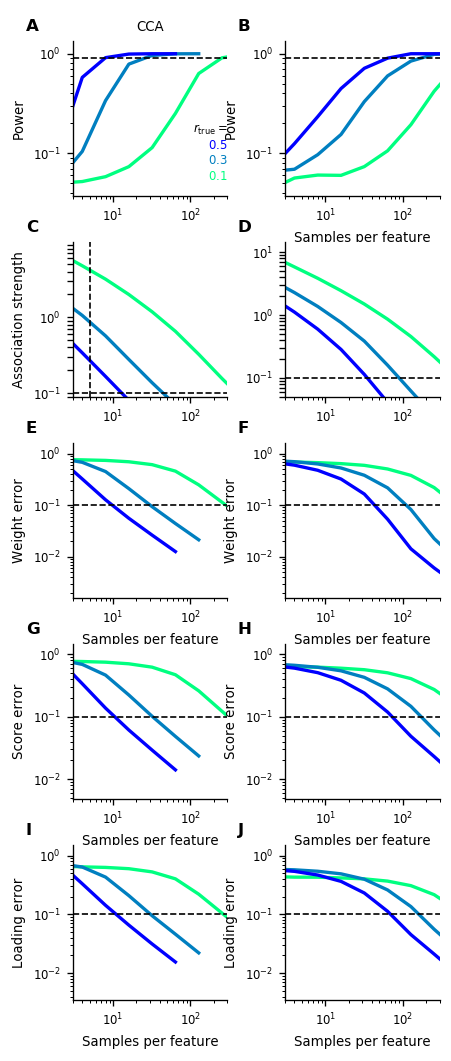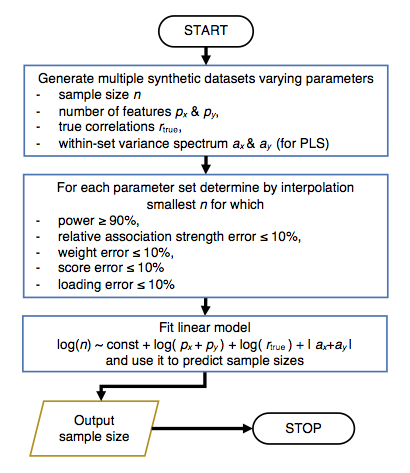How it works¶
To determine a required sample size gemmr uses the following steps
We briefly explain these steps in the following. For more details please refer to the [gemmr] publication.
First, a joint covariance matrix for \(X\) and \(Y\) is constructed with dimension \((p_X+p_Y) \times (p_X + p_Y)\). The upper left block of size \(p_X \times p_X\) represents the covariance matrix for dataset \(X\). We assume it is diagonal (which is equivalent to saying that a principal component analysis has been applied beforehand) and the entries on the diagonal, \(d_i\) decay with a power-law dependence as \(d_i=i^{a_X}\) (we assume that \(a_X < 0\)). For dataset \(Y\) we make analogous assumptions, i.e. that the lower right block of the joint covariance matrix with dimension \(p_Y \times p_Y\) is diagonal and the entries are modeled as \(i^{a_Y}\) with \(a_Y < 0\). The upper right and lower left block of the joint covariance matrix encode the association between datasets \(X\) and \(Y\) and are constructed such that the correlation between the optimized linear composites of \(X\) (\(X\) scores) and linear composites of \(Y\) (\(Y\) scores) is \(r_\mathrm{true}\). The joint covariance matrix determines a multivariate normal distribution. Synthetic datasets \(X_\mathrm{synth}\), \(Y_\mathrm{synth}\) of size \(n \times p_X\) and \(n \times p_y\), respectively, are generated by sampling from this normal distribution. Each synthetic dataset is analyzed with CCA or PLS and statistical power as well as errors of estimated association strength, weights, scores and loadings (compared to their true values, which we know as they are determined by the joint covariance matrix that we constructed) are calculated.

Second, for given \(p_X, p_Y, a_X\) and \(a_Y\) synthetic datasets of varying size \(n\) are generated and the smallest \(n\) is determined for which statistical power and error metrics reach a target level of 90% and 10%, respectively.

Third, as the computational expense to repeatedly analyze synthetic datasets is high we have performed the outlined calculations for a number of parameter values and have then fitted a linear model to be able to quickly predict sample sizes.
